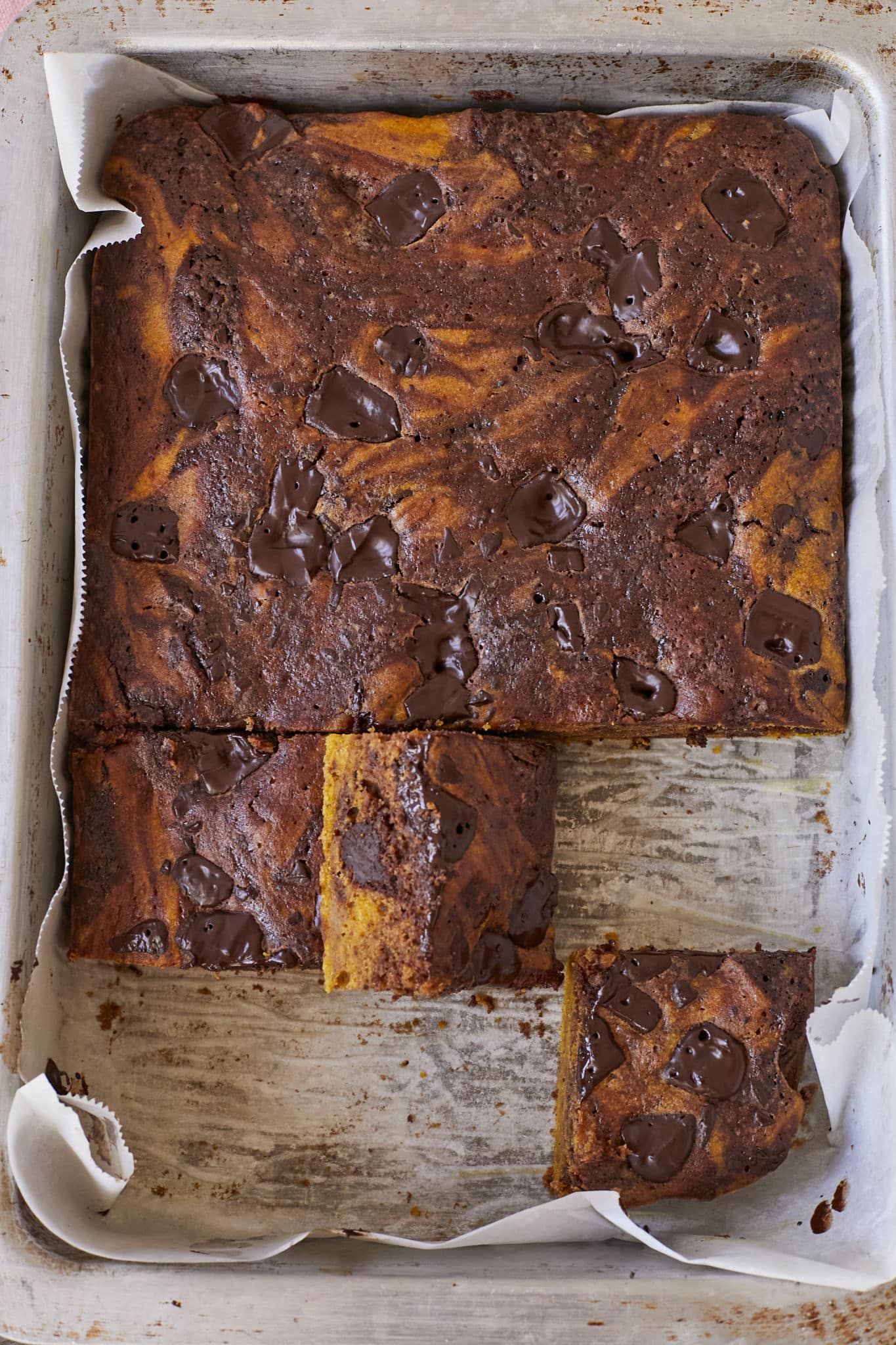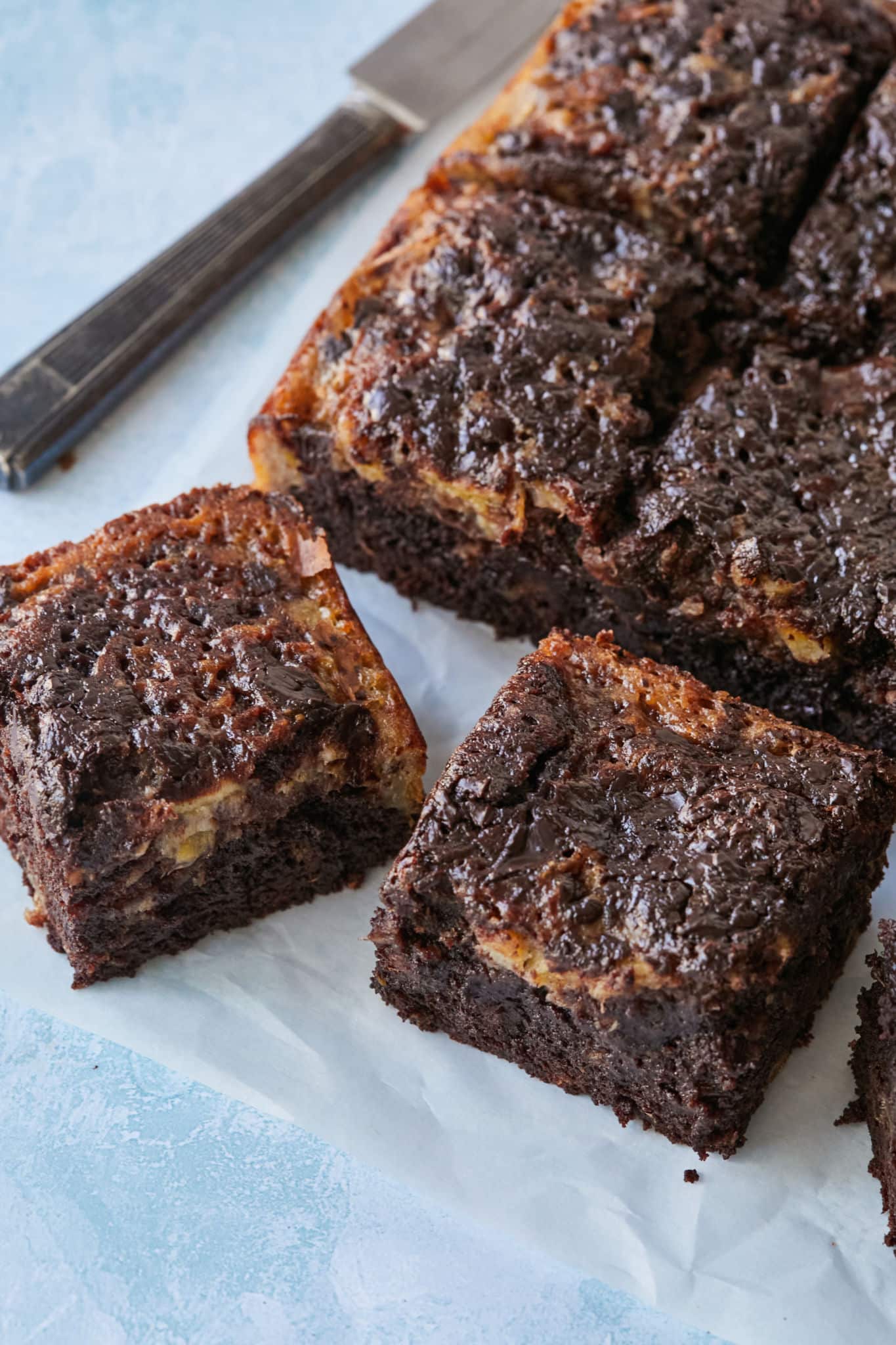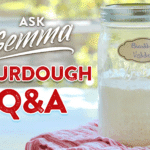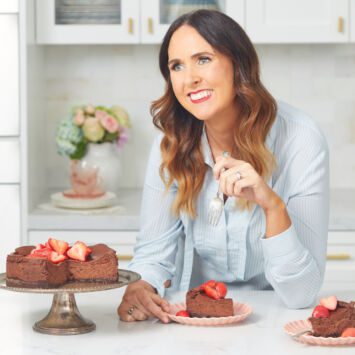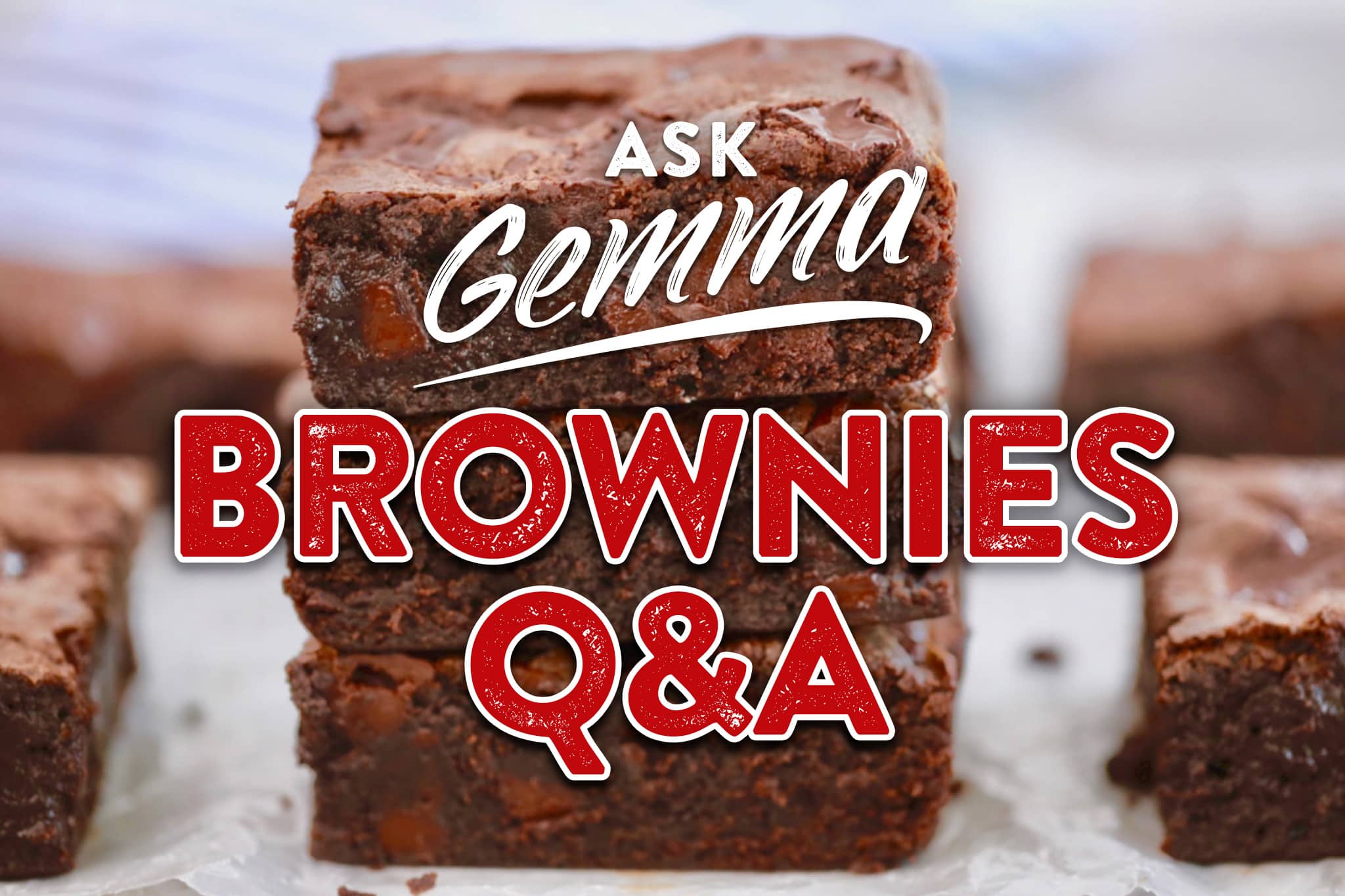
This post may contain affiliate links. Please see my full disclosure for details.
Hi Bold Bakers!
WHY YOU’LL LOVE THIS Q&A: After 10 plus years of cataloging what I like to call ‘Baking intelligence’ about some of bakings biggest recipes, we created comprehensive Q&As that will help you make ice cream, cookies, cakes, cheesecakes, pastries, scones, sourdough, and more! Dive into the decadent world of brownies with this expertly curated Brownies Q&A post. In this comprehensive guide, we have your brownies questions answered to achieve perfection every time.
As passionate brownie enthusiasts ourselves, we understand the ins and outs of achieving the most desirable balance of fudgy goodness and irresistible flavor. From classic recipes to creative variations, we’ve poured our heart and soul into compiling the ultimate Brownies Questions & Answers. Got a burning question about brownie baking? Look no further! Simply drop your query in the comments, and our team of seasoned bakers will be on standby to provide you with the tips and tricks you need to take your brownie game to the next level.
Table of Content
- Brownies Questions: Dry Ingredients in Brownies
- Brownies Questions: Wet Ingredients in Brownies
- Brownies Questions: Fat in Brownies
- Brownies Questions: Tools for Baking Brownies
- Most Frequently Asked Brownies Questions
- Troubleshooting for Baking Brownies
- Most Popular Brownies Recipes
Brownies Questions: Dry Ingredients in Brownies
Q: Can I use whole wheat flour and will it make any difference?
A: If you would like to use whole wheat flour in place of the all-purpose flour, we suggest replacing it by no more than 50%. It should taste fine. Beyond that, the whole wheat flour can result in an overly dense brownie with some potential bitterness.
If you want to use another whole grain, like spelt or rye, which has a lower gluten content than whole wheat, replace no more than 25% of the all-purpose flour or the brownie may end up without enough structure to hold together.
You can experiment with recipes such as Marbled Pumpkin Pie Brownies.
Q: Can I make gluten-free brownies?
A: Yes, you can make gluten-free brownies using our recipes such as Best Fudgy Keto Brownies, 5-Ingredient Flourless Brownie Roll, 2 Ingredient Nutella Brownies, and Vegan Brownies.
Q: Can I do away with the chocolate chunks?
A: Yes, you can skip chocolate chunks but the chocolate makes for a richer, extra decadent brownie.
Q: Can I use white sugar instead of brown sugar for baking brownies?
A: If that’s all you have, you can use white sugar but it may be more cakey and less fudgy. Brown sugar adds extra moisture and gives your brownies lovely rich, caramel tones. If you have molasses, you can make my Homemade Brown Sugar.
Q: Do you pack brown sugar for baking brownies?
A: No, I don’t pack brown sugar for brownies. For the most accurate measurement, go by weight if you have a kitchen scale.
Q: Should I use 100% natural cocoa powder or Dutch-processed cocoa powder to make brownies?
A: Natural cocoa powder is more acidic, yields a lighter color and gives a brighter, fruitier chocolate flavor. Dutch-processed cocoa has been processed with alkali, which neutralizes the acidity and gives baked goods a darker color and a mellow, richer, more chocolatey flavor.
When a recipe doesn’t call for any leavening (like my Best-Ever Brownies) or only calls for baking powder, either of those cocoa powders will work, depending on the flavor results that you want.
If a brownie recipe has baking soda as the leavening agent, you must use natural cocoa powder because baking soda needs the acid in the cocoa to react. If you use Dutched cocoa in this instance, the brownies won’t rise and the baking soda will leave a bitter, soapy taste.
Best-Ever Brownies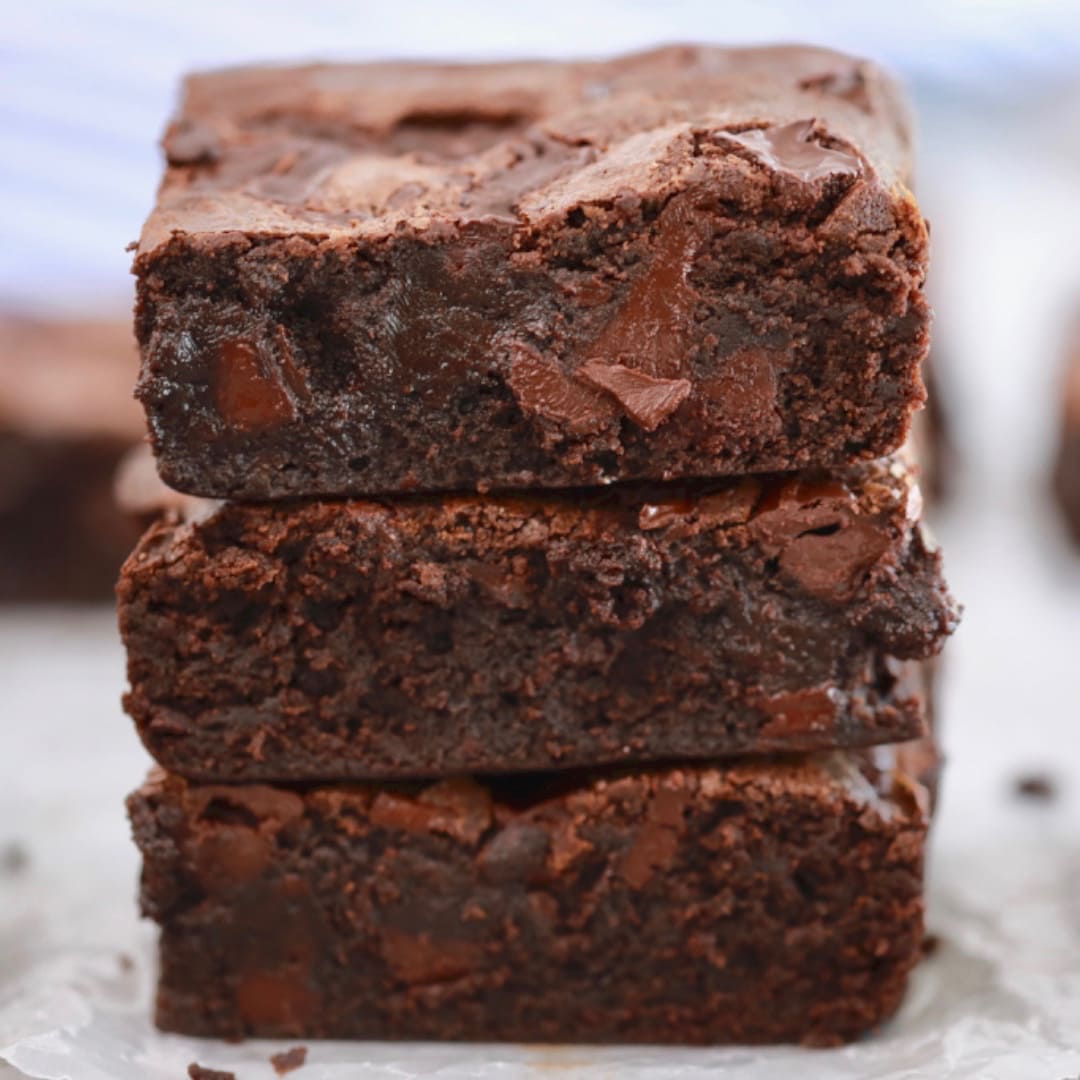
Q: What kind of salt should I use for baking brownies?
A: We use plain table salt in most of our recipes. Fine sea salt can be used in the same amount. Kosher salt can also be used but you will need a little more: for Diamond Crystal kosher salt (which we recommend), use 1 1⁄2 or 2 teaspoons of salt to replace one teaspoon of table salt. If you only have Morton Kosher salt (which is denser and saltier than Diamond Crystal), use 1¼ teaspoons to replace one teaspoon of table salt.
Q: Can you add instant coffee powder to brownies?
A: Yes! Coffee adds depth and complexity to the flavor of chocolate. For the Best Ever Brownies recipe, we recommend dissolving 1 teaspoon of instant coffee or espresso in 1 tablespoon of hot water and adding that to your batter when you are mixing the butter, oil and sugars.
Q: Can I use hot chocolate powder instead of cocoa powder?
A: No. Hot chocolate powder is cocoa powder mixed with other ingredients such as sugar and milk powder, which makes it sweet and with a muted chocolate flavor that would create overly sweet and otherwise tasteless brownies. Pure cocoa powder is bitter and intense, and holds its own when mixed with the other ingredients in the batter, creating a deeply chocolatey experience.
Q: Can I add mix-ins to brownies and if so when should I add them?
A: Yes, you can add mix-ins, and here’s what to do:
- For dry mix-ins, such as nuts or candy, fold this in as the last step before pouring the brownie batter into the tin.
- For a saucy mix-in, such as caramel sauce or jam, first spread your brownie batter into the tin, then dollop the sauce over the surface. Finally, use a thin knife to swirl the sauce into the batter. (You don’t need to mix it completely as the swirls will look nice and taste better if not fully mixed in.)
- Fresh fruit can be tricky as the water content can throw off the balance of the brownie batter and create a wet, droopy mess. We have not tested incorporating this into a brownie but if we did, we would try a few things with the idea of keeping the brownie batter more or less separate from the fruit to allow it to bake up properly around the fruit :
- Use a drier fruit, like sliced bananas, and add it as a middle layer to brownie batter.
- If using a juicier fruit, like berries, sprinkle them on top of the brownie batter where the excess liquid has a chance to evaporate.
- Finally, cook down fresh fruit into a jammy consistency and incorporate it into the batter as a saucy mix-in as explained above.
Brownies Questions: Wet Ingredients in Brownies
Q: Can you use a milk substitute in brownies?
A: Brownie recipes don’t often contain milk, but if yours does, any milk alternative can be substituted 1 for 1.
Q: Can you use an egg substitute in brownies?
A: Yes! Flax eggs should give you the closest result but none will be identical. Check out our Guide To Egg Substitutes for even more egg substitutes and what recipes to use them in.
Brownies Questions: Fat in Brownies
Q: Can I replace butter with margarine?
A: technically yes you can. We suggest that you use stick margarine and not the softer stuff that you can get in tubs for it to best replicate butter once the brownies cool. Because margarine contains more water than butter, the end result will be a slightly drier, less silky or creamy brownie. My personal preference is that if you can use real butter then that will yield you a superior brownie.
Try Banana Bread Brownies and Gemma’s Better-Than-Boxed Brownies Mix!
Q: Why are both butter and oil used in brownie recipes?
A: The combination of both butter and oil is to achieve the desired balance of flavor, moisture, and texture in recipes like The Chewy Brownies Of Your Dreams and The Secret To Crinkle Top Brownies.
- Oil can be flavorless and is close to 100% fat, which keeps brownies moist and fudgy.
- Butter is 80%-85% fat. It gives a rich, creamy flavor and contains water which creates steam when baked, giving brownies some lift.
- Texture-wise, the ratio of butter to oil can be adjusted to control the final texture of the brownies. More butter will lead to a slightly lighter and softer texture, while more oil will yield a chewier and denser texture.
- Shelf Stability-wise, butter can go rancid over time due to its milk solids. Using oil alongside butter can help keep the brownies fresh for longer.
Q: Can you use sunflower oil instead of vegetable oil?
A: Yes, you can use any neutral flavored oil to replace vegetable oil and get the same results, such as here: Decadent Caramel Brownies.
You can also use a more flavorful oil, like olive or coconut oil in this recipe Healthy No Bake Brownies (Vegan), but you will be able to taste the flavor of the oil in the brownies (which you might like).
Brownies Questions: Tools for Baking Brownies
Q: Can I bake brownies in different-sized pans than the recipe calls for?
A: Yes, you can use a different-sized pan and monitor the baking accordingly.
- If you use a bigger pan your brownies will be thinner and will take a few minutes less in the oven than the recipe calls for.
- If you use a smaller pan, the brownies will be thicker and may take a few minutes more to bake.
Be careful not to overbake your brownies! You know when your brownies are perfectly cooked when they’re firm around the edges but they’re still soft and JUST set to the touch in the middle, no longer jiggling. A knife inserted in the center should come up with some very moist crumbs attached, but not wet batter.
Q: How can I double the recipe?
A: Double each ingredient by 2 and follow the recipe as normal. Bake in 2 pans side by side and rotate halfway through baking.
Q: Should I bake brownies using the convection setting on my oven or the regular setting?
A: Our recipes are meant to be baked with standard conventional oven settings without fan (not convection).
- But if you want to use convection, lower the oven temperature by 25°F (14°C).
- You can also make brownies on the stovetop: Simple Stovetop Brownies.
Q: What’s the best pan to use for brownies?
A: A square or rectangular metal baking pan is a popular choice for brownies. Here’s why:
- Even Heating: Metal pans distribute heat evenly, ensuring that your brownies bake uniformly.
- Crispy Edges: Metal pans can yield brownies with slightly crispy edges, which many people find desirable.
- Easy Removal: You can line the metal pan with parchment paper or foil for easy brownie removal.
The Perfect Skillet Brownies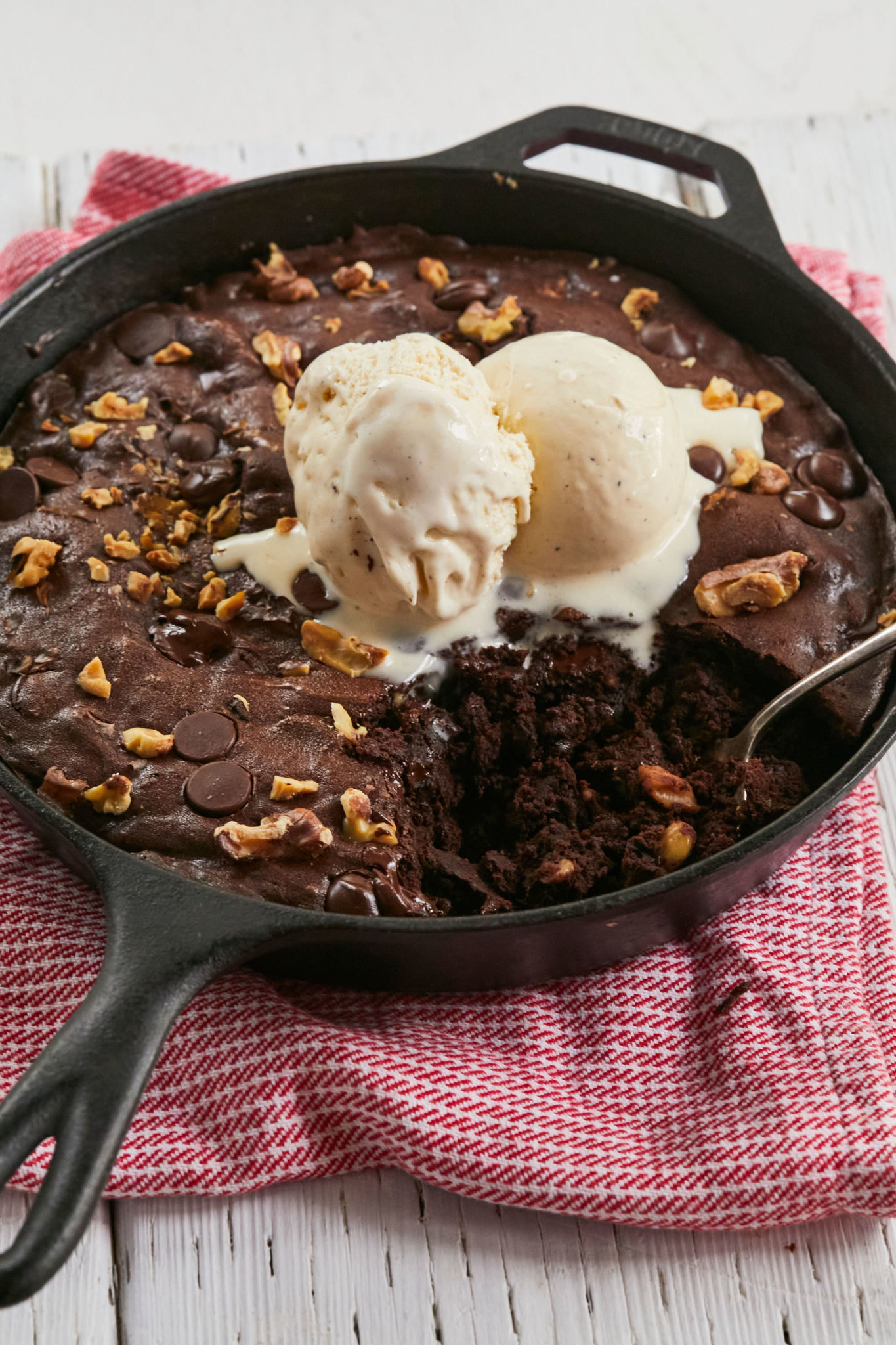
Most Frequently Asked Brownies Questions
Q: Can I freeze baked brownies?
A: Yes, you can freeze brownies. I do it all the time and the results are great!
- Stack cooled and cut brownie squares between layers of wax or parchment paper (to prevent sticking) in an airtight container.
- Defrost at room temperature for about an hour or microwave for about 20 seconds.
- You can also warm them up in a 350°F (180°C) oven for a few minutes. Or eat them straight from the freezer!
Q: Can you cut back on the sugar in brownies?
A: You can reduce the sugar by ¼ of the required amount.
- Sugar adds both sweetness and moisture to brownies, as well as serving as a binding agent. Finally, it caramelizes during baking which gives brownies its characteristic crinkly tops.
- For these reasons, we suggest reducing the sugar by no more than 25% or your end results will be dry, less flavorful and crumbly.
Q: Do I have to wait until the melted butter mixture is completely cooled before adding in the flour?
A: It’s best to cool the butter down to room temperature. Having all ingredients at the same or similar temperature will help everything mix more evenly.
To cool butter faster, pop it in the freezer for a few minutes, stirring frequently.
Q: Can you brown the butter before adding it to the batter?
A: Yes you can! Browning the butter adds a wonderful nuttiness and complexity to brownies.
- To brown butter, place it in a small saucepan and heat gently over low heat, watching frequently so it doesn’t burn, until the butter turns a deep brown. Immediately transfer this to a heatproof bowl to stop the cooking.
- Browning butter causes some water to evaporate, so before using it in a recipe, re-measure it and replace any loss of volume or weight with water or a splash of milk.
- If your recipe calls for un-melted butter, cool the brown butter until solid before using. You should still remeasure it and replace any loss of volume or weight with a bit of water, milk or additional butter.
Q: Can I age brownie batter in the fridge?
A: Yes, as long as your brownie recipe does not include a leavening agent, you can age the brownie batter in the fridge to enhance the flavor and texture.
- Aging the batter allows the ingredients to meld together and develop more complex flavors over time. The resulting brownies will have a richer chocolate flavor and a chewier texture.
- To age brownie batter in the fridge, prepare the batter as usual and then cover it tightly with plastic wrap or transfer it to an airtight container. Place the covered batter in the refrigerator for at least several hours or up to overnight.
- When you’re ready to bake the brownies, it is important to remove the batter from the fridge, let it come to room temperature for at least 1 hour, and then proceed with baking as usual. If your batter is still cold when it goes into the oven, you may end up with over-baked edges and a too-gooey center.
- Depending on the temperature of the batter when it goes into the oven, baking time might be slightly different than what is stated in the recipe. Pay careful attention towards the end of the baking time to make adjustments as needed.
Q: Do you have to use only the type of chocolate specified in the recipe?
A: No, you can use any kind of chocolate that you like! We love the richness of bittersweet chocolate, but semi-sweet, milk or even white chocolate would all work. Try and enjoy Chocolate Brownie Cookies!
Q: Can you make a brownie in a mug?
A: Yes, you can! Try our 1 Minute Microwave Brownie In A Mug, 3 Ingredient Nutella Brownie in a Mug, and 2-Minute Microwave Brownie Bowl.
Q: Is it better to freeze brownie batter or bake them and then freeze them?
A: We suggest baking them and then freezing them.
- Brownies freeze very well, and when defrosted they taste just as good as freshly made.
- Better yet, you can defrost one at a time so you can have homemade brownies whenever you want them.
Q: How can I make brownies with a crackly top?
A: This is how to make brownies with a crackly top:
- A crackly top can be achieved by beating the eggs and sugar until they become pale and fluffy before adding other ingredients. Check out my recipe The Secret to Crinkle Top Brownies.
- During the beating process, the sugar dissolves into the eggs and coats the protein air bubbles. This stabilizes the egg proteins, creating a firmer and more stable structure when baking.
- As the brownies bake, the air trapped in the egg and sugar mixture creates small pockets within the batter. When the brownies rise and then cool, these air pockets collapse, resulting in the characteristic crackly or shiny top surface.
Crinkle Top Brownies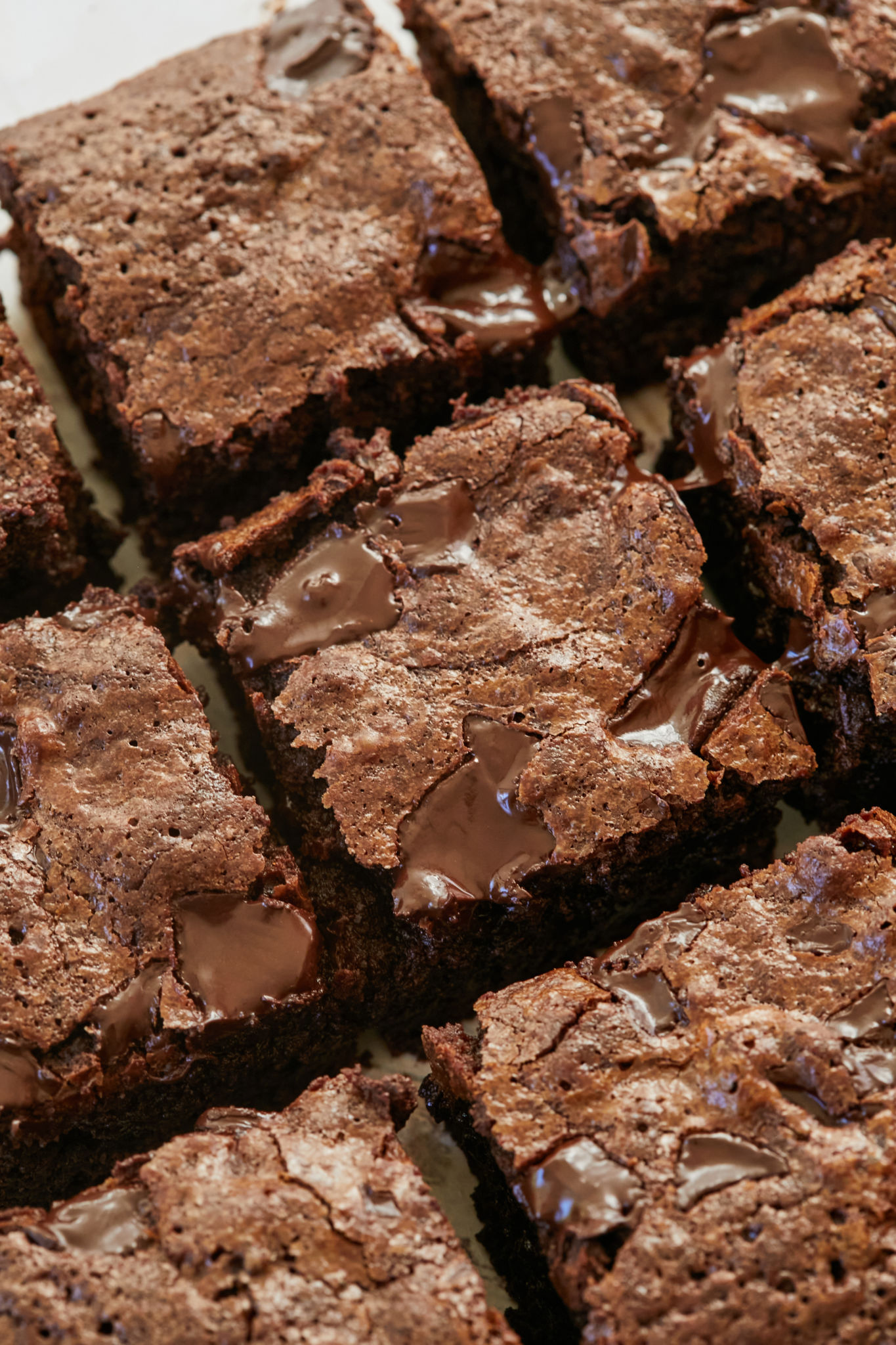
Troubleshooting for Baking Brownies
Q: Why are my brownies oily?
A: Brownies can become oily for several reasons and here’s what to do:
- The batter needs to be properly emulsified with the fat evenly distributed throughout to avoid it separating from the flour and seeping out, which would lead to an oily result.
- To achieve this, make certain that the butter has cooled to room temperature and that the eggs (and milk, if your recipe calls for that) have no chill on them. Cold ingredients will cause the butter to seize and your batter to curdle.
- When mixing the dry ingredients into the butter and sugar mixture, try alternating adding the dry ingredients with the eggs to keep the fat and water in the eggs stable.
- Stop mixing just as soon as the ingredients are just combined to avoid overmixing which can also cause the batter to split.
- Wheat flour from various sources and countries can absorb liquid differently. Try adding a few more tablespoons of flour if you suspect that this is the case.
- Be sure to check out my article and spend time knowing your oven better. Yours may run lower or higher than mine so you may need more or less cooking time.
- A properly cooked brownie will be firm around the edges and still soft (but not liquidy) in the center.
- A knife inserted in the center should have some very soft crumbs still attached to it.
- Pay more attention to whether your brownie has all the signs of being correctly baked rather than the stated bake time of the recipe.
- Allow the brownies to cool completely in the pan before attempting to cut them. The residual heat from the pan will gently set the center without over-cooking it. Uncooled brownies will be too tender to handle and may seem greasy or overly gooey.
- If your recipe uses melted chocolate, make sure the quality is high and you melt it gently. Cheap chocolate splits quickly and can cause excess fat to pool around the batter.
Most Popular Brownies Recipes
- Gemma’s Best-Ever Brownies Recipe
- Ultimate Cream Cheese Brownies
- Ultimate Chocolate Peanut Butter Brownies
- Chewy Coconut Macaroon Brownies
- The Perfect Skillet Brownies
- Hot Fudge Brownie in a Crock Pot
- Full Batch Microwave Brownies
- How to Make Brownie Brittle From Scratch
- Chewy Mochi Brownies
- Salted Caramel & Chocolate Brownie Trifle Recipe
- No Bake Fudge Brownie Cheesecake
- Brownie Bread Pudding
